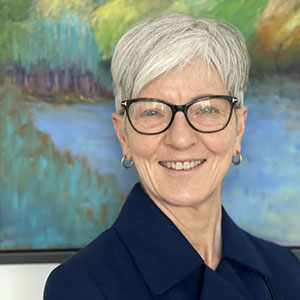Over the past quarter century, nonprofits have become increasingly essential players in solving global humanitarian problems. Today governments and donors look to nonprofits to improve the education and health of the world’s poorest people, an estimated four billion of whom live on less than $2 a day.
Yet the money that flows so generously to these global organizations often comes with strings that deny nonprofits the general operating support they need to live up to their potential to expand programs that work for all who need help.
When the Bridgespan Group conducted interviews with more than two dozen leaders of global nonprofits, we found that nearly all wanted to make major changes in their programs and operations that could make them more effective, but they were frustrated by the lack of money available to pay for such improvements. As a result, two-thirds of the leaders said strengthening their operations in a way that would spread change broadly remained a distant goal.
For most, the biggest obstacle blocking the transformation they seek is a tightfisted approach to spending on “indirect costs,” or overhead, encompassing strategic planning and staff training, as well as program evaluation and computer-systems upgrades. And it’s pervasive. Seventy percent of the nonprofit leaders surveyed named “insufficient indirect cost recovery” from foundations, donors, and governments as one of their most pressing problems.
Equally vexing is the unintended fragmentation of the way international nonprofits work caused by patterns in the way donors award money.
Since the mid-1990s, governments, foundations, and wealthy donors have sharply increased financial support to nonprofits that work in the developing world. But they typically restrict what their money can pay for to specific programs and projects, shrinking the amount of unrestricted money that supports the organization as a whole. This approach has spawned a patchwork of short-term efforts around the globe as nonprofits chase donor dollars.
Playing by donors’ rules, many nonprofits have grown into global conglomerates managing, in some cases, hundreds of programs in dozens of countries.
While outwardly successful, they are part of a pattern of fragmented growth that allows individual projects to multiply while the basic operations starve, preventing activities essential for improving results, such as evaluating programs and passing along the information gleaned from assessments throughout the organization.
Fragmentation also squanders precious dollars. Compared with data from multinational companies, the nonprofits surveyed spent nearly 80 percent more to administer the dollars they receive and employed nearly twice as many finance workers. In part, this is a result of donors’ diverse reporting requirements—each donor requires unique reports and overhead calculations, resulting in extra, labor-intensive work. One organization admitted to concurrently using five general ledgers.
Decentralized operations also add to the number of administrative staff members needed. Perversely, donors cite current overhead costs as proof that nonprofits already spend too much on administration, apparently oblivious to their role in pushing up the very costs they question.
The absence of coordinated financial-management systems reflects comparatively low spending on information technology. In fact, Bridgespan’s survey data reveal that nonprofits spent less than half as much on information-technology systems as comparable for-profit companies, resulting in slower and less comprehensive reporting capabilities at a higher cost. More than 44 percent of nonprofits could not readily produce total costs for how much they spent on finance, human resources, and information technology.
Multinational corporations worked through these same kinds of growth issues beginning in the 1980s as globalization began to shift into high gear.
Corporations grew by opening international outposts to access new markets. But they soon realized that dotting the globe with factories and staff members led to fragmentation that begged for better integration and coordination. In time, corporations learned to build the administrative and technical infrastructure needed to manage their sprawling global operations.
Today, global nonprofits are struggling to follow the same path—with one key difference. Multinationals are masters of their own fate when it comes to investing in people and infrastructure. By contrast, nonprofits rely on the generosity of donors who, for the most part, restrict their investments to specific programs and projects, leaving nonprofits starved for general operating support.
Many nonprofit leaders feel trapped by donors’ unrealistic expectations about holding administrative costs down. Donors typically set an overhead reimbursement rate of 15 percent or less because they equate keeping overhead spending low with efficiency.
Of course, while many nonprofit leaders want to remedy this problem, they also help to perpetuate it by touting their organizations’ low overhead on their Web sites and in marketing materials.
Moreover, donors say that nonprofit leaders have not made the case for investing in the kinds of infrastructure they say they need, nor can they demonstrate results that come from such investments. In addition, board members too often focus on cost-cutting rather than on the cost of delivering lasting impact.
Despite the odds, transformation is possible. Two leading nonprofits—Heifer International and World Vision International—have found ways to pay for needed financial and management changes.
Ninety percent of Heifer’s financial support is unrestricted so, in theory, it should have been easy to make the investments needed to increase its impact. But according to the current CEO, Pierre Ferrari, the “board had shied away from investments that would count as overhead. There had been a conscious choice, not so much by donors but by management and board, to underinvest in enterprise activities. They didn’t understand the need for systems and processes that reduce overhead and increase efficiency in order to focus on impact.”
A new cadre of leaders had to “open the hood” to show the board and the rest of the organization how inefficient systems both increased costs and reduced impact.
At World Vision, leaders also had to persuade the heads of its networks throughout the world to approve a plan to redirect existing overhead dollars to invest in operational improvements. But sidestepping the elephant in the room—donor preferences for programs at the expense of operations—may not be an option for many other nonprofits.
Widespread change will require grant makers, donors, boards, and nonprofit leaders to embrace new ways of thinking and acting.
For their part, donors must come to grips with the unintended consequences of restricting their support to specific programs while depriving organizations of the resources they need to invest in operational efficiency. And they should stop focusing on low overhead as an indication of well-run organizations. Rather, donors and nonprofit leaders must shift the conversation to understand how to optimize impact per dollar, including what investments are required to maximize measurable results and create smart ways to expand programs on a broad scale.
Board members, especially those with corporate backgrounds who understand the importance of investment, must change the mind-set that views low overhead as a proxy for managerial excellence. Instead, boards should push for investments in the basic systems and leadership that will transform highly fragmented organizations into models of integration and efficiency.
And nonprofit leaders need to stop playing the low-overhead-is-good game and lead the charge for adequate general operating support. Without it, their organizations can’t live up to their potential to transform the lives of the world’s poorest populations.
Jacob Allen is a manager at Bridgespan, where Jeri Eckhart Queenan and Jari Tuomala are partners. Ms. Queenan heads the organization’s global development practice.
May 5, 2013
Donations to Global Charities Too Often Come With Strings
Governments and donors often look to nonprofits to improve the education and health of the world’s poorest people. Yet the money that flows so generously to these global organizations often comes with strings that deny nonprofits the general operating support they need to live up to their potential to expand programs that work.
-
 Jari Tuomala is a senior advisor for The Bridgespan Group. He works with nonprofit and philanthropy organizations, helping them to develop and implement new strategies and improve their operating models.
Jari Tuomala is a senior advisor for The Bridgespan Group. He works with nonprofit and philanthropy organizations, helping them to develop and implement new strategies and improve their operating models. -
 Jeri Eckhart Queenan is a senior advisor in Bridgespan's New York office. For over ten years, Jeri spearheaded Bridgespan’s Global Practice, traveling to 50 countries on six continents, launching Bridgespan as the global organization it is today.
Jeri Eckhart Queenan is a senior advisor in Bridgespan's New York office. For over ten years, Jeri spearheaded Bridgespan’s Global Practice, traveling to 50 countries on six continents, launching Bridgespan as the global organization it is today. -
 Jacob Allen is former manager in The Bridgespan Group's Boston office.
Jacob Allen is former manager in The Bridgespan Group's Boston office.

This work is licensed under a Creative Commons Attribution 4.0 International License. Permissions beyond the scope of this license are available in our Terms and Conditions.
Related Content
-
Bridgespan at 25
25 years of impact-and Bridgespan is just getting started
-
High-Impact Approaches to Corporate Giving
The largest corporate givers globally and in Asia and three approaches that frame how corporations give.
-
The Largest Institutional Philanthropies Step Up Giving
Philanthropy does not have deep enough pockets to replace tens of billions in cancelled development aid and cutbacks in social services, but some donors see a way forward.
